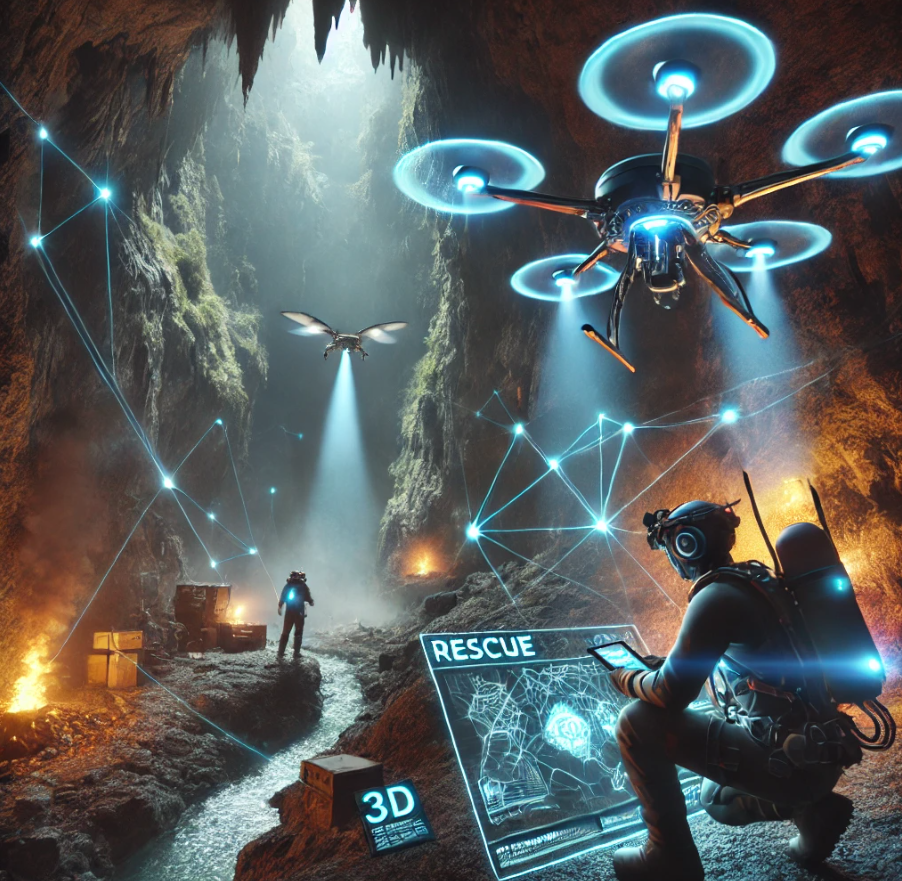Cave exploration has long captured the imagination of adventurers and scientists alike, offering a unique opportunity to explore the hidden worlds beneath our feet. However, it is also dangerous and has significant risks, especially regarding rescue operations. Fortunately, recent technological advancements have revolutionized exploration and rescue missions, making caving safer and more efficient. In this article, we’ll explore five high-tech innovations transforming the cave exploration and rescue operations world.
- Drones and Autonomous Robots
One of the most groundbreaking innovations in cave exploration is using drones and autonomous robots. These devices have revolutionized how explorers map and navigate cave systems, particularly in difficult-to-reach or hazardous areas. With high-resolution cameras, LiDAR (Light Detection and Ranging) sensors, and thermal imaging technology, drones can create detailed 3D maps of cave systems without risking human lives.
Autonomous robots are especially valuable for rescue operations. They can enter areas too dangerous for rescuers and relay real-time data, including visuals and environmental conditions, to rescue teams. Some drones and robots can also transport small equipment or deliver supplies to trapped individuals in situations where human rescuers cannot immediately reach them.
A notable example is the use of autonomous drones during the Tham Luang cave rescue in Thailand, where a group of boys were trapped inside a cave system. The drones provided crucial mapping and reconnaissance data that helped coordinate the successful rescue mission.
- Wearable Technology and Smart Suits
Cave explorers and rescuers can now access advanced wearable technology that enhances safety and performance. Smart suits, equipped with sensors to monitor vital signs, environmental conditions, and physical movements, are becoming an essential tool for professional cavers and rescue personnel. These suits can detect changes in temperature, air quality, and even movement patterns, providing early warnings of potential dangers such as hypoxia (oxygen deprivation) or hazardous gas leaks.
For rescue operations, wearable devices can transmit vital data back to command centres, allowing remote monitoring of rescuers’ health and safety. In some cases, these suits can be connected to exoskeletons or powered assistance devices, allowing rescuers to carry heavy loads or traverse rugged terrain more easily.
These high-tech innovations have dramatically reduced the risks associated with cave exploration and rescue missions. They make it easier to navigate through challenging environments while ensuring the safety of both explorers and rescuers.
- Advanced Communication Systems
Communication has always been one of the biggest challenges in cave exploration and rescue missions. Traditional radios often fail deep underground due to signal interference from rock formations, leading to dangerous situations where rescuers and explorers are cut off from external support. However, advancements in wireless communication technology are changing that.
New systems like wireless mesh networks and low-frequency radio waves allow rescuers to stay connected even in the most profound cave systems. These technologies can transmit signals through thick rock layers, ensuring communication lines remain open throughout the mission. Some systems even use data relays or signal repeaters at intervals throughout the cave, extending communication range deep into the earth.
For example, during the infamous Nutty Putty Cave incident, where a man tragically became trapped and could not be rescued, the inability to maintain consistent communication contributed to the challenges faced by rescue teams. This event underscores the importance of reliable communication technology in cave rescue efforts.
- 3D Scanning and Virtual Reality (VR)
3D scanning and virtual reality (VR) are indispensable tools for cave exploration and rescue missions. Using 3D scanners, explorers can create highly accurate digital models of cave systems, mapping out every twist, turn, and chamber with precise detail. These scans are useful for scientific research and critical during rescue missions, where a clear understanding of the cave’s layout can mean the difference between life and death.
Virtual reality takes this further by allowing rescue teams to practice and simulate missions in a virtual environment before attempting a real-life operation. VR simulations can be based on 3D scans of the cave, providing rescuers with a realistic view of the terrain and potential obstacles. This technology is also used to train rescuers in navigating tight spaces and practising their response to various emergency scenarios without risking lives during training exercises.
For explorers, VR offers a chance to explore dangerous sections of caves virtually before physically entering them, reducing risk and helping them plan safer routes.
- AI-Driven Rescue Algorithms
Artificial intelligence (AI) is increasingly essential in cave rescue operations. AI-driven algorithms can process massive amounts of data from various sources—such as drone footage, sensor readings, and environmental conditions—to predict the best course of action in real-time.
During rescue missions, AI systems can analyze cave structures, predict the movement of water or debris, and recommend optimal escape routes. These systems can also monitor the progress of rescue operations and offer real-time suggestions on improving efficiency, ensuring that every second is used effectively during life-saving missions.
AI-powered tools have already been used in various search and rescue operations, from disaster recovery to mountain rescues, and their integration into cave rescue missions promises to improve safety and success rates further.
Conclusion
Five high-tech innovations—drones and autonomous robots, wearable technology, advanced communication systems, 3D scanning, and AI-driven rescue algorithms—have transformed the world of cave exploration and rescue operations. These technologies not only make cave exploration more accessible but also ensure that rescue operations are more efficient and effective, reducing risks to both explorers and rescuers.
As technology evolves, we can expect even more innovative solutions to improve the safety and success of cave-related activities. Whether it’s exploring uncharted cave systems or responding to life-threatening emergencies, these advancements are paving the way for a new era in cave exploration and rescue.

